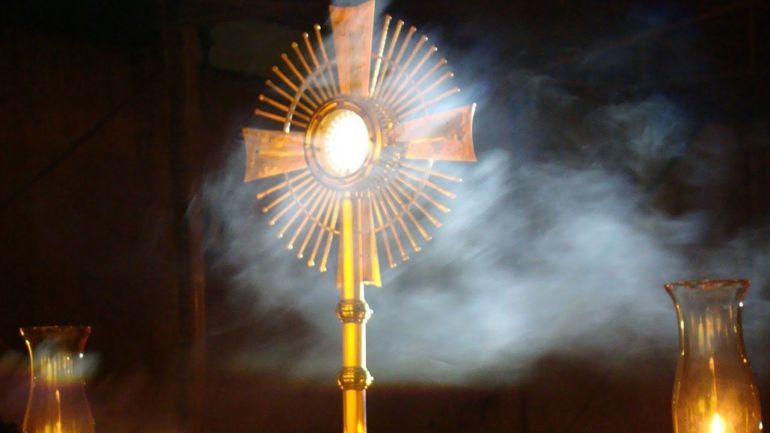Catholics celebrate Corpus Christi Day today

The Blessed Sacrament of the Altar in the Custody
Catholics today celebrate Corpus Christi Day, also known as the Solemnity of the Body and Blood of Christ. Previously it was called Corpus Domini (?? Body of the Lord ??), it is a celebration of the Catholic church destined to celebrate the Eucharist.
Its primary purpose is to proclaim and increase the faith of Catholics in the real presence of Jesus Christ in the Blessed Sacrament, giving him publicly the worship service (latria).
This day recalls the institution of the Eucharist that took place on Holy Thursday during the Last Supper when Jesus converted the bread and wine into his Body and his Blood.
Specifically, Corpus Christi is Thursday that follows the ninth Sunday after the first full spring moon of the northern hemisphere. In some countries, this party has been moved to the following Sunday to adapt to the work schedule.
History
The party arose in the Middle Ages when in 1208 the religious Juliana de Cornillon promoted the idea of celebrating a festivity in honor of the body and blood of Christ present in the Eucharist. Thus, it was observed for the first time in 1246 in the Diocese of Liège (Belgium).
In the year 1263, while a priest celebrated the mass in the church of the town of Bolsena (Italy) when the consecrated host broke, blood flowed. [1] This miraculous event, prevalent and celebrated, gave a definite boost to the establishment as a liturgical feast of Corpus Christi.
It was instituted on September 8, 1264, by Pope Urban IV, through the bull Transiturus hoc Mundo. Saint Thomas Aquinas was commissioned to spread it with his work Oficio y Misa del Corpus, as well as composing Eucharistic hymns for the fiesta, such as the Pange Lingua.
In the Council of Vienne of 1311, Clement V will give the rules to regulate the processional procession inside the temples and even indicate the place to occupy the authorities who would like to be added to the parade.
In the year 1316, John XXII introduced the Eighth with an exhibition of the Blessed Sacrament. But the great accolade will be given by Pope Nicholas V when on the feast of Corpus Christi in 1447, he goes out processionally with the Holy Host through the streets of Rome.
In many places, it is a party of particular relevance. In Spain, there is the popular saying: Three Thursdays there are in the year that shine more than the sun: Holy Thursday, Corpus Christi and the day of Ascension, which gives an idea of the roots of this festival.
The celebrations of the Corpus usually include a procession in which the same Body of Christ is exhibited in a monstrance.
















